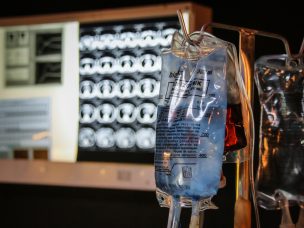June 16, 2023
Rituximab vs. Oral Immunosuppressive Therapies for NMOSD
This study demonstrated the relatively greater efficacy of rituximab for preventing relapses in neuromyelitis optica spectrum disorder patients than administering oral immunosuppressive agents. Neuromyelitis optica spectrum disorder (NMOSD) is an inflammatory autoimmune disorder associated with high levels of disability and relapses. Despite the high disease prevalence in this population, Black patients are consistently underrepresented in...
Efficacy and Safety of Monoclonal Antibody Therapy in Patients With NMOSD
Off-label and approved monoclonal antibodies are associated with a significantly lower risk of relapse compared to standard treatments. Off-label monoclonal antibodies can be utilized in resource-limited settings. Neuromyelitis optica spectrum disorder (NMOSD) is an inflammatory demyelinating condition involving the central nervous system (CNS). Both off-label and Food and Drug Administration (FDA)-approved monoclonal antibodies (mAbs) are...
Complement Biomarkers Reflect the Pathological Status of NMOSD
Complement biomarkers, including complement factor H (CFH), Ba, and sC5b-9, present in the peripheral blood of neuromyelitis optica spectrum disorder patients, can aid in understanding the disease’s status. The complement system is implicated in the pathogenesis of neuromyelitis optica spectrum disorder (NMOSD). Recently, eculizumab, a humanized anti-C2 monoclonal antibody, was utilized in treating neuroimmune diseases....
Impact of Dysautonomia on the Quality of Life in NMOSD
Severe dysautonomic symptoms in patients suffering from neuromyelitis optica spectrum disorder are associated with poor quality of life. Management of these symptoms can facilitate a better quality of life for these patients. Neuromyelitis optica spectrum disorder (NMOSD) is an inflammatory condition that involves the central nervous system (CNS), and its pathogenesis is based on the...
Latest Advancements in Neuromyelitis Optica Spectrum Disorder Treatment
Prompt and accurate diagnosis and treatment of NMOSD aid in restoring patients’ visual and neurological functions in the acute stage of the disease. The novel strategies include the administration of biologics and monoclonal antibodies. Neuromyelitis optica spectrum disorder (NMOSD) is a rare chronic autoimmune disorder primarily based on the involvement of the optic nerves and...
Cerebellar Connectome Alterations and Genetic Signatures in MS and NMOSD
Neurobiological mechanisms that explain the association of multiple sclerosis and neuromyelitis optica spectrum disorder with the cerebellum include alterations in the cerebello–cerebral and within-cerebellar connectivity and relevant genetic changes. The cerebellum is integral to the pathology of neuromyelitis optica spectrum disorder (NMOSD) and multiple sclerosis (MS); however, the underlying mechanisms to explain this association and...
Rituximab in NMOSD and MOG-Associated Disease
Compared to CD19-positive B-cell monitoring, CD27-positive B-cell monitoring of reinfusion of the rituximab therapeutic regimen reduced the number of re-infusions with a comparable safety and efficacy profile. Patients suffering from myelin oligodendrocyte glycoprotein-associated disorders (MOGAD) and neuromyelitis optica spectrum disorder (NMOSD) are widely administered B-cell-depleting agents; however, there is a lack of evidence-based information regarding...
Visual Disability in Neuromyelitis Optica Spectrum Disorders: Prognostic Prediction Models
The strong visual disability predictors in neuromyelitis optica spectrum disorder include seropositivity for AQP4-IgG, optic neuritis at the first attack, and older age at onset. High-effect immunosuppression at an early stage is required for high-risk patients. Neuromyelitis optica spectrum disorder (NMOSD) is an autoimmune disorder involving the central nervous system (CNS), resulting in transverse myelitis...
Mapping Respiratory Infections Through Wastewater
This study found various quantities of viral RNA in wastewater samples. Human coronavirus comprised the highest concentration, followed by rhinovirus, respiratory syncytial virus B, human metapneumovirus, and influenza A. Wastewater epidemiology studies use biological samples to monitor the trends of disease occurrence in a particular community, irrespective of the symptoms or the medical care provided....








